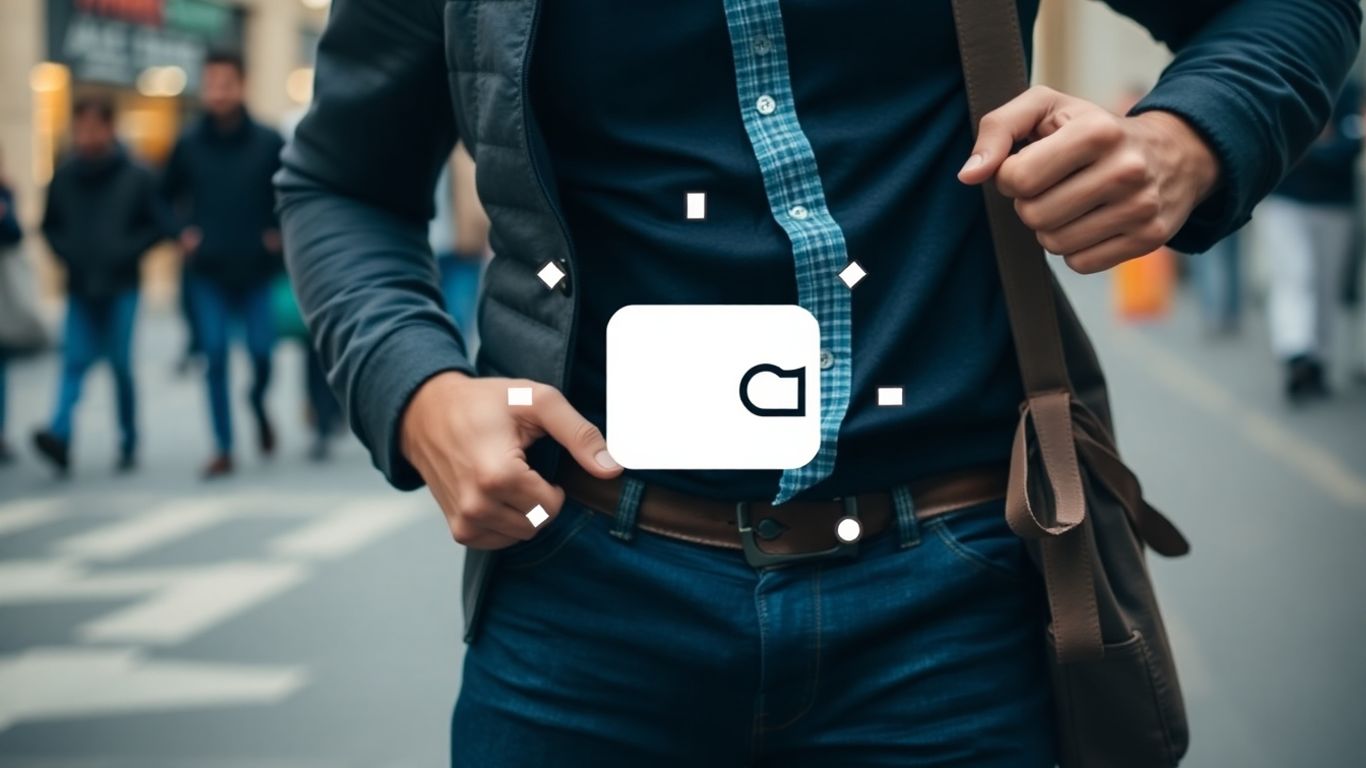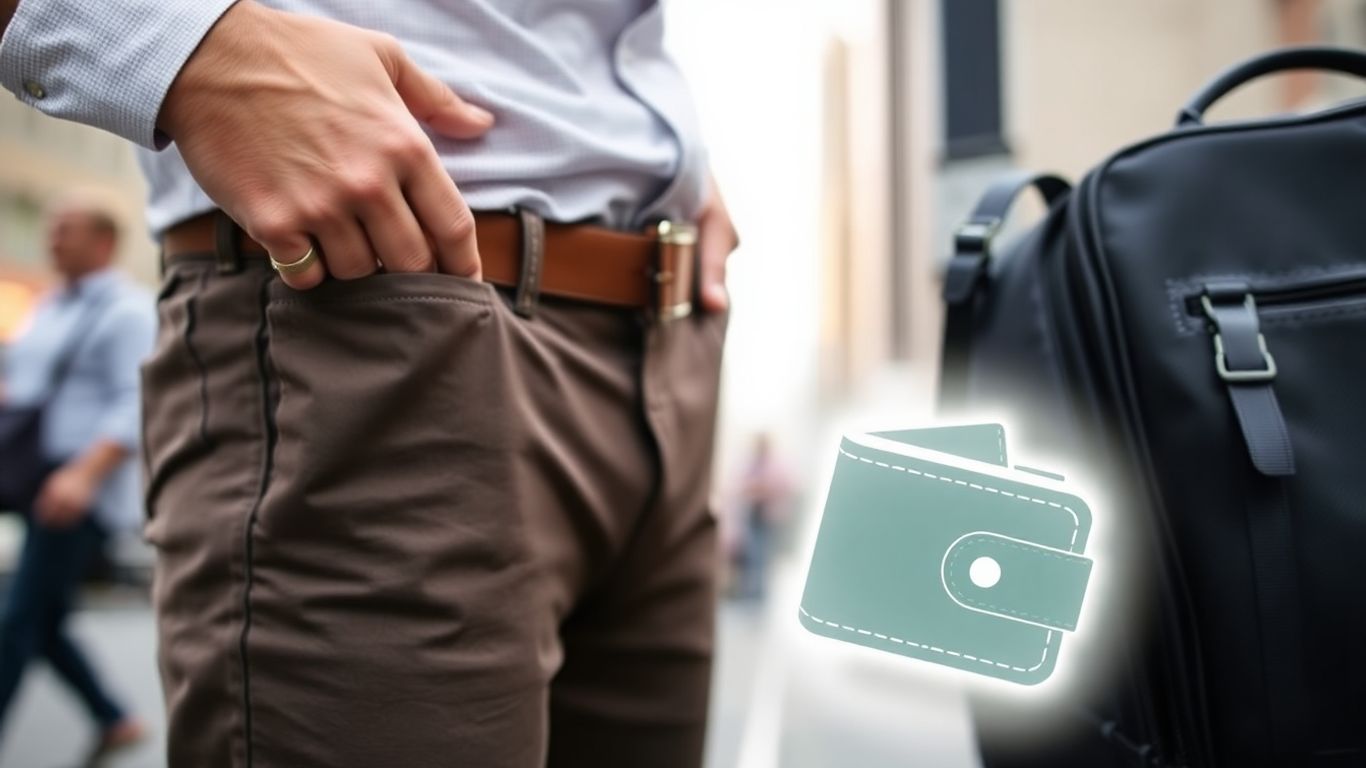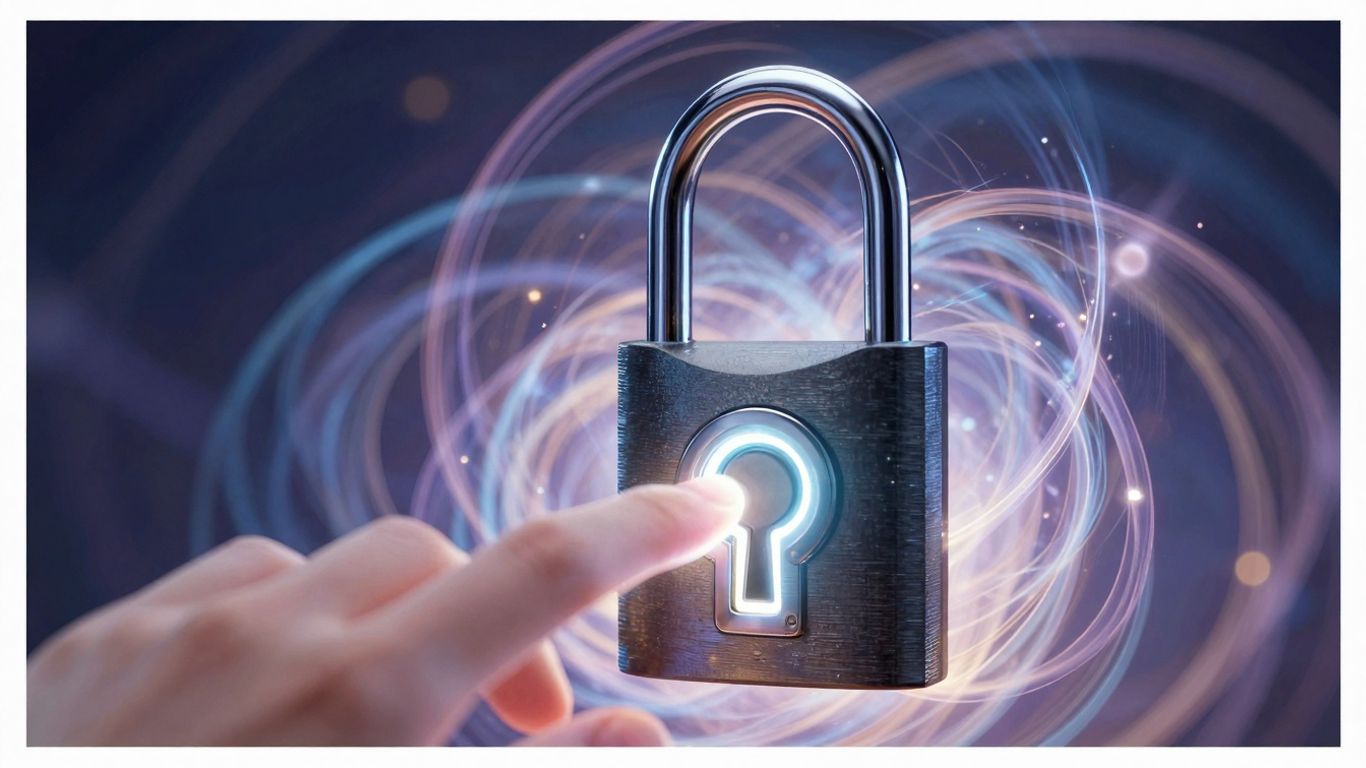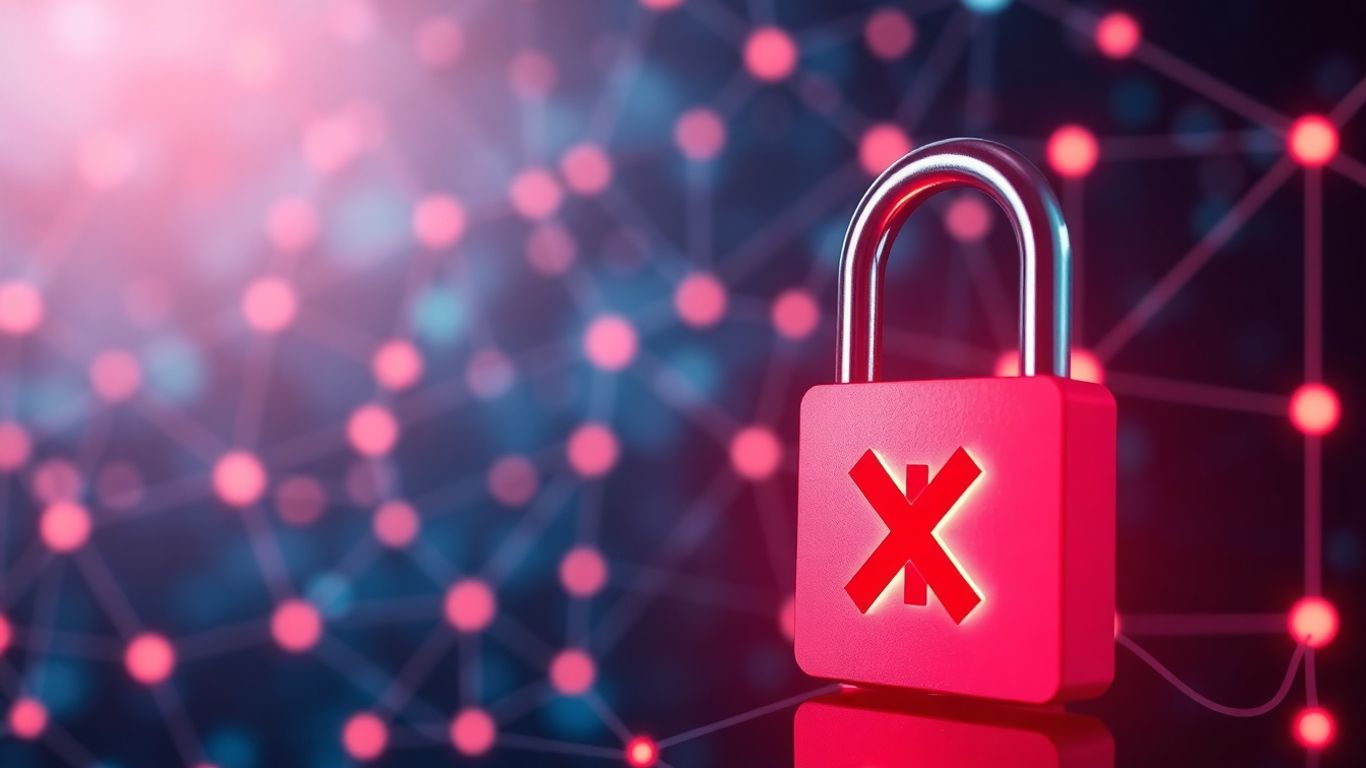[ newsletter ]
Stay ahead of Web3 threats—subscribe to our newsletter for the latest in blockchain security insights and updates.
Thank you! Your submission has been received!
Oops! Something went wrong. Please try again.
Lost your wallet? Learn how to track a wallet with immediate steps, retracing your steps, contacting authorities, and using technology. Prevent future losses.





So, you've done that awful thing: reached for your wallet and found... nothing. It's a sinking feeling, right? Suddenly, you're thinking about all your cards, your ID, and maybe even some cash. It happens to a lot of people, and honestly, it’s a total pain. But don't freak out just yet. There are good ways to figure out how to track a wallet and get it back. We're going to walk through what to do right now, how to retrace your steps, and even how to use some tech to help find it. Plus, we'll cover how to stop this from happening again.
Okay, so you've just realized your wallet isn't where it should be. That sinking feeling? Yeah, we've all been there. The first thing to do, honestly, is just take a breath. Seriously, try to calm down for a minute. Panicking isn't going to help you find it, and it might make you forget important details. Once you can think a little clearer, it's time to get practical.
It's easy to go into full-blown panic mode when you realize your wallet is gone. You might start frantically patting your pockets or rummaging through your bag. But take a second. A deep breath can really help reset your mind. Think about the last time you definitely had it. Where were you? What were you doing? Just a quick mental check can sometimes jog your memory or at least give you a starting point for retracing your steps.
This might seem like a hassle when you're worried about losing money and cards, but it's super important. Try to remember everything that was in your wallet. Was it just cash and cards, or did you have your driver's license, insurance cards, or maybe some important photos? Making a quick list, even just mentally at first, helps you know exactly what you need to report missing and what you'll need to replace. It's also a good idea to have a general idea of how much cash was in there.
Here's a quick checklist of common wallet items:
This is probably the most critical step. If your wallet contains credit or debit cards, you need to contact your bank or credit card company immediately. Most banks have apps or websites where you can temporarily freeze your cards. This is a lifesaver because if you find your wallet later, you can just unfreeze them. If you're sure it's gone for good, report them as lost or stolen. Federal law generally protects you from fraudulent charges made after you report a card missing, so the sooner you call, the better.
It's a good idea to keep a separate, secure record of your credit card numbers, expiration dates, and the customer service phone numbers for each card. This way, if your wallet is lost or stolen, you have all the information you need to report them quickly without having to search through your missing wallet's contents.
Don't forget about your debit card, too. Unauthorized withdrawals from your checking account can be just as damaging. Report any missing debit cards to your bank right away. If you suspect your wallet was stolen, or if it contained sensitive documents like your Social Security card, filing a police report is also a smart move. It creates an official record of the loss, which can be helpful if any identity theft issues pop up later.
Okay, so your wallet is gone. Deep breaths, remember? Before you start tearing the house apart or calling the bank just yet, let's try to be a detective about this. Think about your day. Where were you? What were you doing? Sometimes, the wallet just took a little detour and is waiting for you to come back for it.
Try to remember the last time you definitely had your wallet. Was it when you paid for that coffee this morning? Or maybe when you grabbed gas? Go back through your day, step by step. What did you do right after that? Who were you with? Sometimes talking it through with a friend can help jog your memory, like they're your own personal memory bank. Your phone can also be a big help here. Check your bank app for recent transactions – that's a solid clue for where you might have used it last. Your photo gallery or even text messages might remind you of places you went or people you met.
Once you have a good idea of where you might have last seen it, it's time to go back. Don't just assume it's gone forever. Head back to that coffee shop, the grocery store, or wherever you think it might have slipped out. Ask the staff if anyone turned in a lost wallet. It's surprising how often things turn up this way. If you used public transport, check with their lost and found. Even if you think it's a long shot, it's worth the trip.
Your digital life can actually help you find a physical item. If you have location history turned on for your phone, like Google Maps Timeline, you can literally see where you've been. This can pinpoint places you might have missed in your mental recap. Ride-sharing apps or even email receipts from online purchases can also show you a trail of where you were and when. It's like creating a breadcrumb trail, but with data instead of bread.

Losing your wallet is a real bummer, and sometimes, the best way to find it is to go old school and ask around. Think about everywhere you've been since you last remember having it. That coffee shop, the grocery store, maybe even the gym – they're all potential spots where your wallet might have been turned in.
When you call or visit a place, be ready with a good description. What color is it? What's it made of? Any unique markings? The more details you give, the better. It's also a good idea to ask if they have a specific person or department that handles lost items. Sometimes, a quick chat with a manager can speed things up. Don't be shy about asking, even if you only stopped in for a minute. You never know who might have picked it up and turned it in.
Many larger establishments, like shopping malls or public transport hubs, have dedicated lost and found areas. If you were in one of these places, definitely check with them. They usually keep a log of items turned in. You might need to provide identification to claim an item, so be prepared for that. It's a bit of a process, but it's worth it if your wallet is there. Some places even have online forms or databases you can check, which can save you a trip.
If you suspect your wallet was stolen, or if it contained important documents like your ID or social security card, filing a police report is a smart move. You can often do this online for non-emergency situations, or by calling the non-emergency number for your local police department. This creates an official record, which can be super helpful if any fraudulent activity pops up later. It's a good idea to have a list of what was in your wallet ready when you talk to them. You can report certain crimes online, including fraud, harassing phone calls, identity theft, and lost property. For crimes requiring an officer response, call 408-615-5580.
Filing a police report isn't just about finding your wallet; it's about protecting yourself from potential identity theft. Having that official documentation can make a big difference if you need to dispute unauthorized charges or applications made in your name. It's a proactive step that offers peace of mind.
Here's a quick rundown of what to do:

Losing your wallet is a real pain, but thankfully, technology has stepped up to help. We're not just talking about hoping someone honest finds it anymore. There are some pretty neat gadgets and apps out there now that can seriously boost your chances of getting your wallet back.
These little guys are game-changers. They're usually thin cards or small tags that you slip right into your wallet. The main idea is they use a network to tell you where your wallet is. Most of them connect to your smartphone via Bluetooth for close-range finding – think making the tracker beep loudly so you can hear it under couch cushions. But the real magic happens with their wider networks. When your wallet is out of Bluetooth range, these trackers can tap into a global system. This system uses other people's phones (anonymously, of course) to relay your wallet's location back to you. It's like a worldwide lost-and-found system powered by everyday devices.
Some popular options work with existing phone features:
Even without a dedicated tracker, your phone might already be helping you. If you have location history turned on, apps like Google Maps can show you a timeline of where you've been. This can be super helpful for retracing your steps mentally or even physically. Think about it: if you know your wallet was with you at the coffee shop at 10 AM and the grocery store at noon, you've got two solid places to check.
Don't underestimate the power of your phone's built-in features. Many apps, from maps to banking, log your activity. Checking transaction histories or even photo geotags can jog your memory about your last known location with your wallet.
Some apps offer specific features for finding lost items:
This is where things get really interesting. The
Losing your wallet is a real pain, and honestly, nobody wants to go through that whole ordeal again. The good news is, there are some pretty straightforward ways to make it much less likely to happen in the first place. It’s all about being a little more mindful and maybe using some smart tools.
Think about what you really need to have with you every single day. Do you need that stack of old receipts? Or all those loyalty cards for stores you rarely visit? Probably not. Carrying less stuff makes your wallet lighter and less bulky, which is more comfortable and also means you're less likely to have it fall out of a pocket or bag. Try to pare down to just the absolute essentials: your main ID, a debit card, a credit card, and maybe a little bit of cash. Everything else can probably stay home.
These little gadgets have become super popular, and for good reason. You can get small, coin-sized trackers that you slip right into your wallet. If you misplace it, you can use an app on your phone to make the tracker beep, helping you find it nearby. Some even show you the last known location on a map. It’s like having a little guardian for your wallet. They usually have decent battery life, and some even let you replace the battery when it dies, so they can last a long time.
This is a pretty neat idea that’s gaining traction. Instead of carrying a separate wallet, you can get cases for your smartphone that have built-in card slots. Or, there are even wallets that magnetically attach to the back of your phone. Since most of us are pretty attached to our phones anyway, keeping your wallet and phone together means if you lose one, you’re likely to find the other. Plus, losing your phone is often a bit easier to track with built-in phone-finding features.
Being proactive is key. A few simple changes in how you carry your essentials can save you a lot of stress and hassle down the road. It’s not about being paranoid, it’s just about being smart with your belongings.
Losing your wallet is a real bummer, no doubt about it. It’s that sinking feeling when you reach for it and it's just… gone. But remember, it happens to a lot of people, and you've got a solid plan now. We've gone over how to retrace your steps, check those usual spots, and even use social media to get the word out. And if the worst happens, you know to freeze those cards right away. Think of this whole ordeal as a chance to upgrade your wallet game, maybe even grab one with a built-in tracker. Investing in something like a smart finder isn't just about finding your wallet; it's about saving yourself a whole lot of stress down the road. So, take a deep breath, follow these steps, and let's try to make sure this never happens again.
Take a deep breath! Seriously, try not to panic. Then, take a minute to think about where you last remember having it. Making a quick list of everything that was inside your wallet can also be super helpful for later.
Think back through your day, step by step. Where did you go? What did you buy? Try to remember the last time you definitely had your wallet. Then, physically go back to those places if you can and ask if anyone has seen it.
Yes, definitely! Call any stores, restaurants, or public transport you used. They often have a lost and found box, and someone might have turned your wallet in. Be ready to describe it clearly.
Absolutely! If you have a smart tracker (like a small tile) attached to your wallet, you can use an app on your phone to make it beep or see its last known location. Some phone apps can also show you where you've been during the day.
If you've searched everywhere and still can't find it, your next big step is to protect yourself. Call your bank to freeze or cancel your cards right away to stop anyone from using them. You might also want to report it to the police, especially if you lost important IDs.
To avoid losing it in the future, try carrying less stuff in your wallet. You could also get a wallet with a built-in tracker or a separate tracking device. Some people even attach their wallet to their phone or use a tether.


